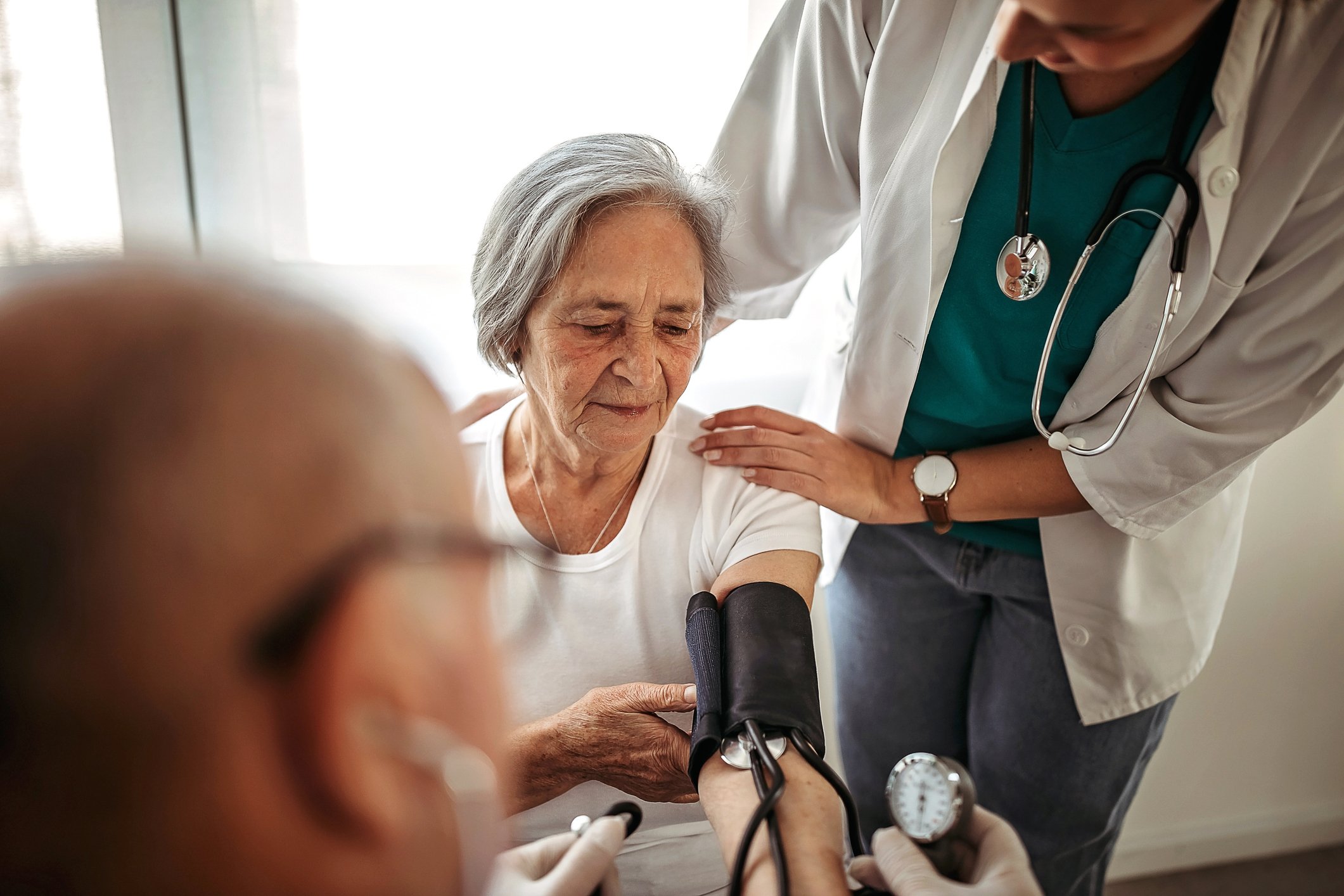The first pillar of anti-aging in dermatology is prevention. For this purpose, protection against UV radiation and the use of antioxidants are important measures. In second place are correction and slowing down of signs of aging of the skin. Topical preparations can slow skin aging, help repair cellular damage and promote new collagen formation.
Aging processes are a consequence of changes in physiological processes and a slowing down of the regenerative capacity (box) . Suitable dermocosmetics against skin aging have caring and protective properties and counteract degenerative changes in the skin [1]. The following is an overview of formulations and ingredients that have been scientifically tested [1].
Active substances with evidence from placebo-controlled studies
Retinol (vitamin A) is one of the cell regulators. The biologically active form is all-trans retinoic acid (tretinoin, retin A, vitamin A acid).
- In a randomized placebo-controlled double-blind study of 36 subjects with clear clinical signs of skin aging (including on the body), a 0.4 percent retinol-containing lotion was shown to be effective after 24 weeks led clinically to a significant reduction in fine wrinkles and biochemically to significantly increased glycosaminoglycan and procollagen I synthesis [3].
- In a three-arm controlled study involving a total of 125 subjects, a 0.5% retinaldehyde cream was compared to placebo and to a 0.05% alltrans retinoic acid cream for efficacy and tolerability in the area of lateral eye wrinkles [4]. Optical profilometry was used to determine a quantitative assessment of skin texture, wrinkle depth, skin roughness, and other parameters. After a period of application of 18 weeks, a significant reduction of wrinkle depth and skin roughness was observed under treatment with retinaldehyde cream. Histological examination of skin samples from 53 subjects over the age of 80 showed that even a seven-day application of a one-percent retinol preparation can significantly improve the composition of the extracellular matrix and lead to an increase in fibroblasts and collagen synthesis with a simultaneous decrease in the matrix-degrading metalloproteinase MMP-1 [5].
- In further studies, these effects were confirmed for retinol and also for retinaldehyde. Similar effects have been demonstrated for all-trans retinoic acid [6,7].

Niacinamide (Vitamin B3): Niacinamide blocks the inhibitory effect of UV radiation on ATP production, promotes DNA repair, reduces actinic keratoses and hyperpigmentation, and also topically minimizes UV-induced immunosuppression [8].
- A formulation containing five percent niacinamide significantly reduced fine lines and wrinkles and decreased hyperpigmentation, redness and yellow discoloration on the face of 50 women with photodamaged facial skin after twice-daily use for 12 weeks. Moreover, an increase in skin elasticity was observed [9].
- In a randomized-placebo-controlled double-blind study of 30 Asian women that appeared later, a preparation containing four percent niacinamide was found to be significantly more effective against wrinkles in the eye region after eight weeks of facial application compared with the control [10]. Interesting in connection with the effectiveness of niacinamide against skin aging is also the result of an in vitro study, according to which niacinamide stimulates the synthesis of ceramides, which decreases with advancing age [11].
Vitamin C (L-ascorbic acid): Vitamin C (biologically active form: L-ascorbic acid) acts as a co-factor in collagen synthesis and is one of the best-studied anti-aging ingredients [12–14]. Since the substance is very hydrophilic, the formulation is very important for it to penetrate the skin.
- Evidence of efficacy from placebo-controlled double-blind studies is available for some vitamin C-containing formulations [15,16]. In one of these studies, a five percent vitamin C preparation was applied to one forearm and placebo to the other for six months in female subjects with photodamaged skin [16]. After this period, increased expression of type I and type III collagen and tissue inhibitor of MMP-1 was detected for vitamin C preparation in biopsies. Moreover, an increase in elastic fibers and a reorganization of collagen type I bundles were observed.
- Some research groups used optical profilometry to document significant improvement in skin texture, wrinkle relief, and skin roughness after application of vitamin C-containing preparations [17,18]. In a randomized placebo-controlled double-blind study including 19 subjects (age range: 36 to 72 years) with moderately photodamaged facial skin, a significant improvement in surface texture, fine wrinkles, and skin elasticity was observed after three months of application of a 10% vitamin C preparation compared to the untreated control [17]. These findings were confirmed by further scientific research. Topical vitamin C preparations must be protected from exposure to light and air, due to significant instability and sensitivity to oxidation effects such as air and UV light.

Low molecular weight hyaluronic acid: Hyaluronic acid is an important component of connective tissue that plays a role in cell proliferation. In humans, hyaluronic acid is found in the dermis, among other places, where its ability to bind large amounts of water gives the tissue strength and elasticity. Originally used in medicine to promote wound healing, hyaluronic acid is now one of the most widely used active ingredients against skin aging. The compound is used to inject wrinkles and is also contained in numerous dermocosmetics. Its use in anti-aging cosmetics is based on the observation that the body’s production of hyaluronic acid decreases with age [19].
- As shown by experimental studies as well as a clinical investigation, hyaluronic acid fragments of certain length counteract skin atrophy when applied topically. Medium length fragments were used to stimulate keratinocytes to proliferate in vitro. In a smaller clinical study of 7 subjects with corticosteroid- or age-related skin atrophy and 17 control subjects, one-month use of a preparation containing 1% hyaluronic acid resulted in a significant increase in skin thickness compared with the control. This is considered evidence that the hyaluronic acid fragments used can penetrate the epidermis [20].
- Independent of this question, the effect of appropriate hyaluronic acid fragments on wrinkle depth was investigated in a placebo-controlled double-blind study [21]. In this study, 76 female subjects between 30 and 60 years of age with macroscopically visible eye wrinkles (“crow’s feet”) each applied a 0.1 percent cream containing hyaluronic acid fragments of different molecular weight (50, 130, 300, 800 and 2000 kDa) on one side twice daily for eight weeks. On the contralateral side, the cream base was applied without hyaluronic acid. Biophysical evaluation was performed after 30 and after 60 days. This involved measurement of horny layer hydration and skin elasticity, and evaluation of the skin surface profile using silicone impressions. All skin areas to which one of the test products was applied showed a significant increase in horny layer hydration and skin elasticity compared to the placebo side. Furthermore, the smaller fragments (50 and 130 kDa) caused a significant reduction in skin roughness as well as a sustained smoothing of the skin surface relief [21].
Consider galenics
In addition to the above-mentioned evidence, there are findings from in vitro and in vivo studies for numerous other active ingredients as components of topical dermocosmetics that demonstrate a benefit against premature skin aging [1]. The properties of dermocosmetics against skin aging are linked to the overall formulation and not exclusively to individual ingredients. The most commonly used creams and lotions are W/O emulsions*, O/W emulsions#, multiple emulsions or lamellar systems. However, lipid-free hydrogels are also used as bases. Other galenic approaches, such as liposomal formulations, ultra-small active ingredient particles (nanocrystals), nanoscale emulsions, and lipid nanoparticles, aim to improve the transport of active ingredients into the skin [22–24].
* W/O=Water-in-oil
# O/W=oil-in-water
Literature:
- “Dermocosmetics against skin aging,” GD Gesellschaft für Dermopharmazie e. V. guideline, www.gd-online.de/german/veranstalt/images2017/GD_LL_Dermokosmetika_gegen_Hautalterung_13.03.2017.pdf (last accessed Jan. 28, 2022).
- Bayerl C: Dermatologist 2016; 67: 140-147.
- Kafi R, et al: Arch Dermatol 2007: 143: 606-612.
- Creidi P, et al: J Am Acad Dermatol 1998; 39: 960-965.
- Varani J, et al: J Invest Dermatol 2000; 114: 480-486.
- Bhawan J: Int J Dermatol 1998; 37: 286-292.
- Boisnic S, et al: Dermatology 1999; 199; Suppl. 1: 43-48.
- Bayerl C: Act Dermatol 2017; 43: 431-433.
- Bisset DL, Oblong JE, Berge C: Dermatol Surg 2005; 31: 860-865.
- Kawada A, et al: J Dermatol 2008; 35: 637-642.
- Tanno O, et al: Br J Dermatol 2000; 143: 524-531.
- Pinnell SR: J Am Acad Dermatol 2003; 48: 1-19.
- Van Scott E, Ditre CM, Yu RJ: Clin Dermatol 1996; 14: 217-226.
- Phillips CL, Combs SB, Pinnell SR: J Invest Dermatol 1994; 103: 228-231.
- Haftek M, et al: Exp Dermatol 2008; 17: 946-952.
- Humbert PG, et al: Exp Dermatol 2003; 12: 237-244.
- Traikovich SS: Arch Otolaryngol Head Neck Surg 1999; 125: 1091-1098.
- Rubino C, et al: Plast Reconstr Surg 2005; 115: 1156-1162.
- Ghersetich I, et al: Int J Dermatol 1994; 33: 119-122.
- Kaya G, et al: PLoS 2006; Med 3 : e493
- Pavicic T, et al: J Drugs Dermatol 2011; 10: 990-1000.
- Ashtikar M, Nagarsekar K, Fahr A: J Control Release 2016; 242: 126-140.
- Zhai X, et al: Int J Pharm 2014; 470: 141-150.
- Muller RH, Shegokar R, Keck CM: Curr Drug Discov Technol 2011; 8: 207-227.
- Kerscher M, Buntrock H: Dermatologist 2011; 62: 607-613.
DERMATOLOGIE PRAXIS 2022; 32(1): 40-41












